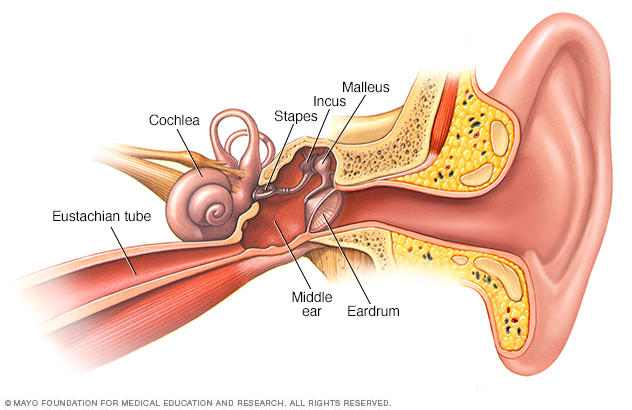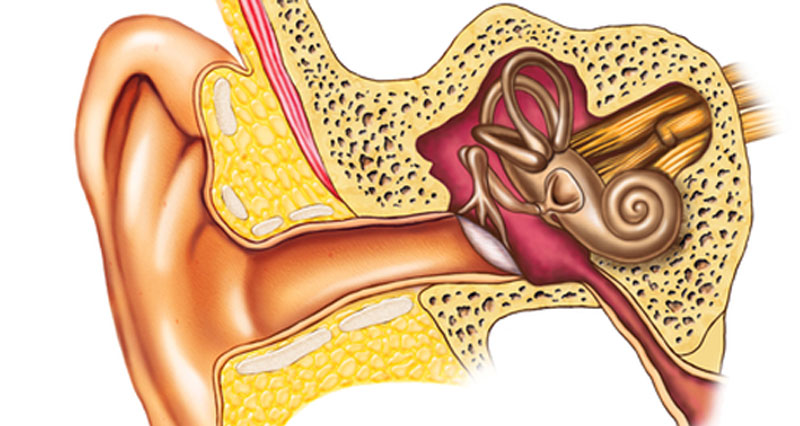

One of the most common ways eardrums rupture is due to trauma. Plus, the risk for a middle ear infection increases since the membrane also helps keep bacteria out of the middle ear. With a significant rupture or tear, hearing is reduced. In some situations, the eardrum can tear or rupture. Despite being thin, the tympanic membrane is tough and flexible but not immune to damage. The eardrum plays an important role in sound transmission. These vibrations are picked up by bones in the middle ear and a sequence of events begins that carries sound information to the brain to be interpreted. When sound waves move into the ear from the outside, it causes the eardrum to vibrate. Its role is to transmit sound from the outer ear, the portion you see, to the middle ear. Steps you can take to prevent puncturing your eardrum include not placing any foreign objects in your ears, and visiting your doctor promptly to address any ear infections.Between your outer ear and middle ear is a thin membrane called the tympanic membrane, or eardrum.

In rare cases, surgery may be recommended.Īny pain can be addressed by using over-the-counter (OTC) pain medications such as aspirin or acetaminophen.
#Burst eardrum Patch
For holes along the edges of the eardrum, the specialist may choose to put in a temporary patch or dam which helps prevent infection. Punctured eardrums typically heal by themselves in 2 to 3 months, so long as infection is avoided and as long as the person refrains from activities that could aggravate the situation, for example diving or swimming, avoiding medications other than those recommended for the condition, and trying to not blow their nose while the healing is taking place. Ruptured eardrums are diagnosed in a health care provider’s office using an instrument called an otoscope, which has an internal light which allows the doctor to see the eardrum clearly. If left untreated, you risk major inner and middle ear infections, middle ear cysts and the possibility of long term hearing loss. Prompt attention is vital to prevent hearing damage and infection. A ruptured ear drum should be examined and treated by a doctor.


The signs of a perforated eardrum include ear pain, fluid draining from the ear, partial or complete hearing loss in the affected ear, ringing in the ears, and dizziness or vertigo. Eardrums can also become ruptured as the result of head injuries or acoustic trauma such as quick loud noises or explosions. Eardrums can also become punctured while flying or scuba diving on account of barotrauma, which happens when the barometric pressure outside the ear is different from the pressure inside the ear. For instance, you can actually perforate your own eardrum with a cotton swab. A further common reason for ruptured eardrums are foreign objects introduced into the ears. There a variety of ways that an eardrum may become perforated, the commonest being as a result of an ear infection where the resulting buildup of fluid pushes against the eardrum until it rips. Once the ear drum is perforated, the inner ear becomes vulnerable to infection.Ī ruptured or perforated eardrum (more accurately, a tympanic membrane perforation) is what occurs when this vital membrane is damaged by tears or punctures. When undamaged, the eardrum isolates the inner ear creating a sterile and clean environment. The eardrum performs two extremely important functions: clearly, it vibrates in response to sound waves, but it also works as a barrier to safeguard the hypersensitive inner ear from infection.


 0 kommentar(er)
0 kommentar(er)
